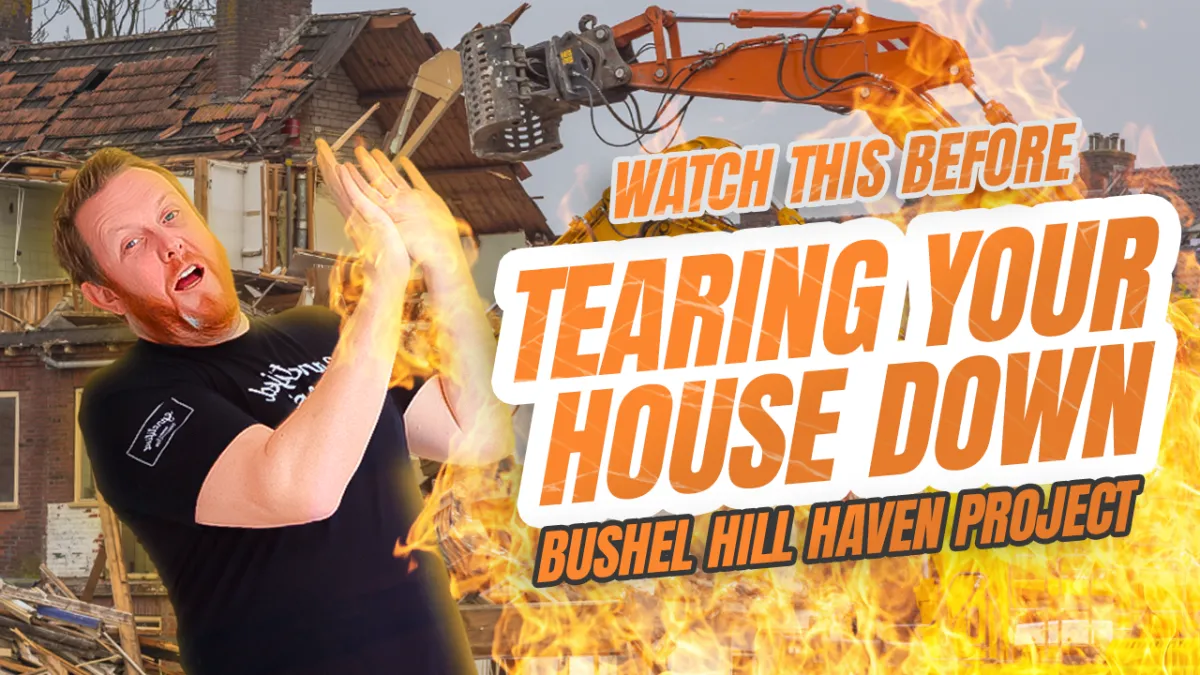Education& Resources helping homeowners and builders make informed choices about Building homes that last
Our ultimate goal is to create a community of builders and homeowners who are dedicated to improving the quality of life in their neighborhoods and communities.
Education& Resources helping homeowners and builders make informed choices about Building homes that last
Our ultimate goal is to create a community of builders and homeowners who are dedicated to improving the quality of life in their neighborhoods and communities.

Tearing Down an Old House: Essential Tips & Preparations
Hey, what's up everybody? It's TJ with Sanctified Homes, and today we're out at our Bushel Hill Haven project, where we're preparing to tear down an old farmhouse built in the late 1800s. If you're considering a similar project, whether it's an old home in town or out in the country, you need to consider several essential steps and preparations.
1. Conduct an Asbestos Survey and Inspection
One of the first and most crucial steps is to conduct an asbestos survey and inspection. Asbestos is commonly found in older homes, especially in materials like insulation, flooring, and roofing. If asbestos is present, you'll need to have it safely encapsulated and remediated before demolition can proceed. This step is not just about safety—it's also a legal requirement. Ignoring this could lead to serious health risks and hefty fines.
2. Disconnect Utilities
Before any demolition work begins, make sure all utilities are properly disconnected. This includes:
Gas: Contact your gas company to cut off the gas line, preferably further back from the house to avoid any risks during demolition.
Water: Ensure that the water supply is turned off.
Electricity: Disconnect the electrical lines safely. It's crucial to involve a licensed electrician in this step to prevent any accidents. Also, notify your utility providers to mark any underground lines, ensuring that your demolition crew knows where not to dig.
3. Secure the Proper Permits
For any demolition project, you'll need the appropriate permits. Around here, it's called a "raise permit," but the terminology may vary depending on your location. This permit allows you to legally take down the structure. Contact your local municipality for guidance if you're unsure about the process.
4. Plan for Debris Disposal
Once the house is down, you'll need a plan for disposing of the debris. This typically involves renting dumpsters that will be filled with the remains of the house. It's important to separate any materials that can be recycled or salvaged, such as metal, wood, or bricks. You might even consider donating salvageable materials to organizations like Habitat for Humanity’s ReStore, which helps to reduce waste and supports a good cause.
5. Consider Environmental Factors
If your property is in the country, be mindful of the location of your septic field and other environmental considerations. You'll need to ensure that the demolition process does not disturb or contaminate these areas. If you're working in a more urban area, be considerate of your neighbors' properties and make sure to manage dust, noise, and debris effectively.
6. Explore Burning as an Option
In some areas, you might have the option to burn the house down rather than demolish it with machinery. However, this requires special permission from your local fire department and adherence to strict regulations. Additionally, if you choose to burn, you'll need to remove materials like shingles beforehand.
Conclusion
Tearing down an old house is a significant project that requires careful planning and preparation. From securing the proper permits to safely disconnecting utilities and considering environmental factors, there are many steps involved in making sure the process goes smoothly. If you have any specific questions or need guidance, always start by contacting your local municipality—they'll provide the most accurate information for your area.
For more expert advice on home building and remodeling, visit Sanctified Homes. In the meantime, don't forget to raise your standard. We'll talk to you guys soon!

Home Building Checklist
We understand that the process of building comes with a lot of decision-making. So we created the Home Building Checklist to guide your decision-making process, and it's yours for free here!
WHAT WOULD YOU LIKE TO LEARN?
How can we help?







Why You Will Love Working With Us


Transparency
Honesty is always the best policy, and this is the policy we swear by. We aim to be as transparent as possible with our clients when building their homes.
- We have no hidden fees or surprises.
- We disclose every invoice and bid because we have nothing to hide.
- We are upfront about all costs, including the price or materials and labor costs, so you can trust every dollar of the process.

Experience
Our team has over 25 years of experience in construction and design, so we know how to make your dream home a reality.
- Over 200 homes build with our combined expertise!
- 25 years experience in
Parade of Homes - Builder Of the Year with Madison Area Builders Association
Ultimately, we believe in raising standards
We believe that by helping to create a community of builders and homeowners who are dedicated to improving the quality of life in their neighborhoods and communities, we can help to create a more equitable and inclusive society.
We want to empower homeowners to become involved in the process of creating their own safe and beautiful living environments.
We also want to give builders the opportunity to make a lasting and positive impact on the community by providing quality homes and neighborhoods. By working together, we can help create a better future for everyone involved.

The Blessed to Build Foundation is a 501(c)3 Non Profit providing education & resources to help homeowners and home builders make informed choices about building homes that last.
Dane County, Wisconsin
Hire a Builder
If you are looking to build a new home in the following cities, connect with Sanctified Homes & Construction to start the conversation.
Copyright Blessed to Build Foundation, Inc. 501(c)3

